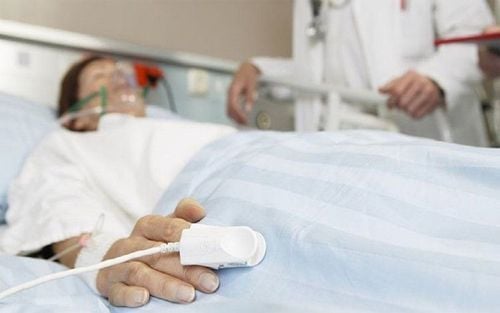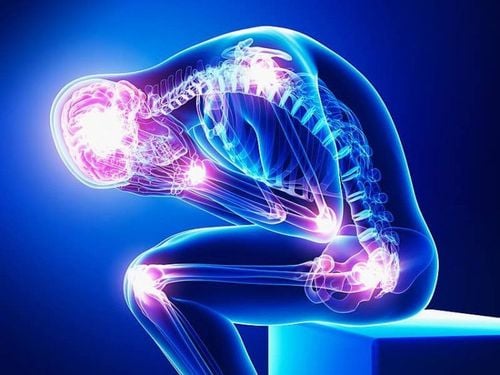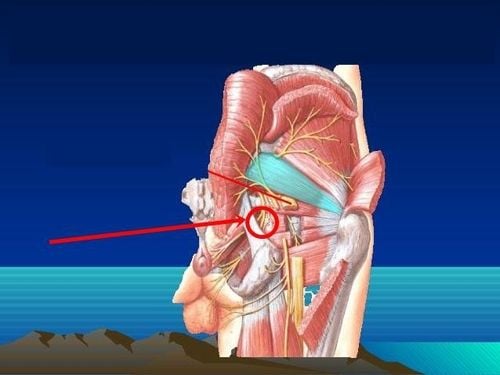This is an automatically translated article.
The article was written by Doctor Bui Hanh Tam - Department of Anesthesiology and Anesthesia, Vinmec Times City International General Hospital.Vaginal pain can be an acute pain caused by an acute infection involving the genitals and urinary tract and should be treated immediately. This article wants to provide a more complete picture of persistent or chronic pelvic pain in both men and women.
For a long time now, when it comes to pain or discomfort in the intimate area, people often think of this as a women's health problem, just as when people talk about reproductive health, women are thought of and get more attention. However, pain in the intimate area is not only a woman's problem, but also a man's "heart you don't know to tell anyone". The content of the article below can help the other half of the world also have the opportunity to be interested in the issue: Nerve pain in the intimate area or neuralgia.
1. What is neuralgia?
The private area is limited between the genitals and anus or the perineum. Vaginal pain is rarely complained, complained or shared because pain in this area is enough to make patients hesitate or delay seeing a doctor. shy).
Most often, neuropathic pain is discovered when it has progressed to the chronic pain stage, which means that the patient has suffered from this pain for longer than 3 months, even years to the point of being unable to do any work. do anything other than silently go to the doctor to cure.
Vaginal pain is described by the words: numbness, stinging, stinging, stabbing pain, electric shock, shooting pain, sometimes a burning sensation or feeling that the vagina is swollen.
Pain can be on one side or both sides, in the groin area, pain around the genitals, anus, pain can spread to the buttocks and back of the legs. This area becomes extremely sensitive to any normal touch such as touching, flushing, personal hygiene, dressing...
This pain gets worse when sitting down, carrying objects heavy, walkable.
In addition, pain may appear and disappear intermittently during the day, especially during sleep. Pain makes the patient want to go to the toilet constantly and pain increases during sex. For men, pain increases when an erection prevents sexual activity.
Patients with chronic neuropathic pain often reduce quality of life from physical activity to study, sleep and social and family relationships, even depression.

Người bệnh đau thần kinh thẹn mạn tính thường gây giảm chất lượng sống, công việc
2. The source of chronic pain in the intimate area
The pudendal nerve is joined by nerve roots that go from the sacral region (2, 3, 4) running from the back, passing between the 2 corresponding ligaments from the sacrum to the pelvic floor near the base of the penis or vagina. The pudendal nerve travels in a tube called the obturator because it is located in the fascia of the obturator muscle. Before entering the obturator duct, the nerve branches to the clitoris in women and the penis in men. At the obturator canal, the pudendal nerve divides into smaller branches that supply the pelvic floor and lower rectum. This is where it sends pain signals to the brain from the genitals, anus, and other body parts around it. The pudendal nerve controls the sphincter opening and closing of the anus, the pelvic sphincter when defecating or exerting pressure such as straining or holding urine.
Neuralgia may occur in patients with lesions related to the anatomical landmarks around the pudendal nerve: anal surgery (rectal surgery, hemorrhoid surgery, anal abscess incision surgery) ), postpartum often with or without episiotomy, after falls with pelvic trauma.
A benign tumor or pelvic infection, even chronic constipation, can compress or irritate the pudendal neuritis causing persistent, refractory pain if: The infection or compression is not completely resolved.
Certain cancers related to the pelvic floor such as cancer of the rectum, anal canal, cancer of the uterus, ovaries, testicles, prostate, and penis that have undergone surgery or radiation therapy to the pelvic floor also can cause pudendal neuralgia due to fibrous tissue as a result of surgery or radiation therapy causing compression or radiation damage to the pudendal nerve causing chronic pain.
In addition, certain types of exercise such as long-distance cycling, gymnastics, gym training with squats or racing can cause pudendal neuralgia because the pudendal nerve is trapped in the middle. pelvic floor organs.
3. Can diagnose the cause of pain

Phụ nữ cần phải phải được thăm khám ngay nếu bị đau vùng chậu
If you have pelvic pain, see and tell your doctor, don't hesitate. Examining and asking about your symptoms will help guide the diagnosis based on the region of the innervation of the pudendal nerve. Detailed medical history or medical history with specialized questionnaires along with sensory mapping will enable the physician to make a detailed diagnosis of pudendal neuralgia.
The clinical examination by special instruments helps the doctor to locate the source of pelvic pain and distinguish it from other types of pain around the pelvis.
In addition, you may also have an imaging test with a magnetic resonance imaging (MRI) machine to evaluate the organs and tissues around the pudendal nerve to localize the anatomy and explain the cause of your pain. .
4. Treatment of neuralgia based on the cause
The treatment of chronic pudendal neuralgia is very difficult, the outcome is often unpredictable due to the need for a special procedure and is completely dependent on the individual, the duration of the pain, the damage involved. , comorbidities and each patient's response to the treatment-intervention regimen.
Treatment of neuralgia can be treated with oral drugs, but this pain treatment is only temporary because the drug only inhibits pain perception in the brain.
At Vinmec hospital, the ultrasound technique under the guidance of a specialized machine for nerve organization will help the doctor make a diagnosis to determine the exact cause of the pain in the intimate area and from there will have a treatment strategy. Step-by-step treatment for pain relief with the general principle of blocking pain signals from the intimate area before it is transmitted through the spinal cord to the brain.
The technique of pudendal nerve anesthesia is an intensive technique, performed under the guidance of an ultrasound machine, a neurostimulator and a long-acting anesthetic for the dual purpose of treating pudendal neuralgia immediately. immediately, and at the same time help diagnose which branch of the pudendal nerve causes the most pain for the patient. From there, the pain specialist has the next strategy for each patient.
Therefore, if you or your loved one suffers from chronic neuralgia, the doctor recommends: If the pain is persistent, continuous, and lasts for more than 3 months, the patient needs to see a specialist. pain treatment for timely diagnosis and treatment. During treatment, patients need to follow the doctor's instructions and be patient with the treatment regimen because chronic pain is still a challenge for modern medicine not only in Vietnam but also in other countries. advanced in the world such as the US, France, Switzerland, Japan, Korea, Singapore... Skipping the treatment course will cause the disease to recur soon and risk more severe complications, making it difficult for doctors to treat the disease. Work.
Please dial HOTLINE for more information or register for an appointment HERE. Download MyVinmec app to make appointments faster and to manage your bookings easily.













